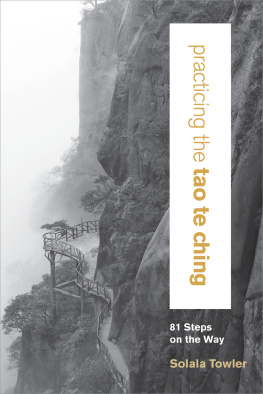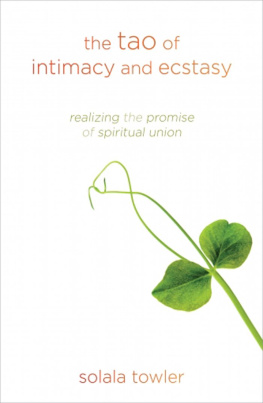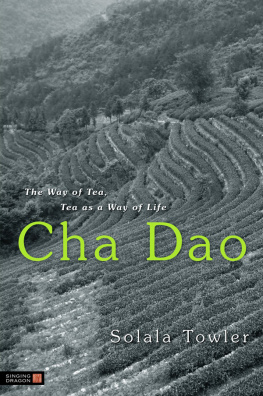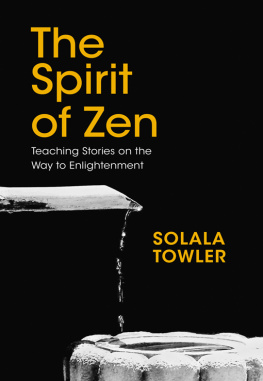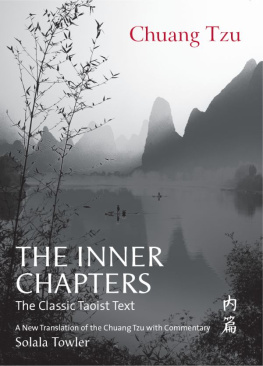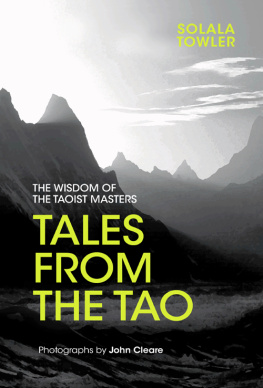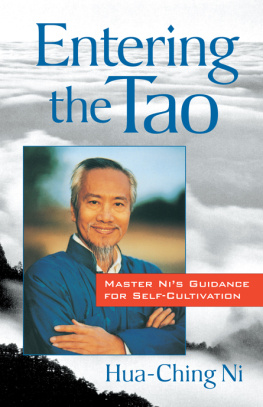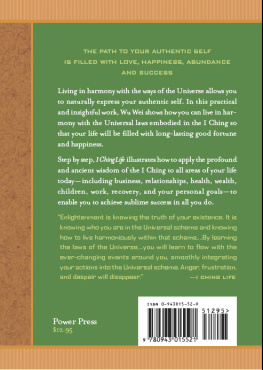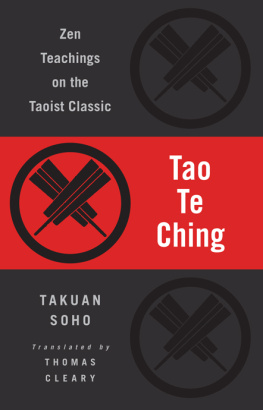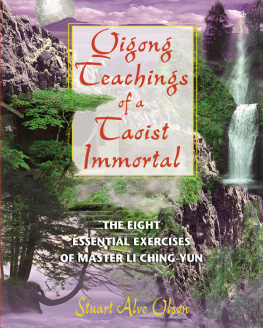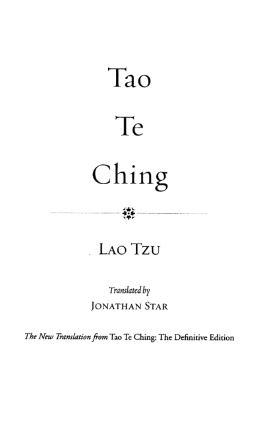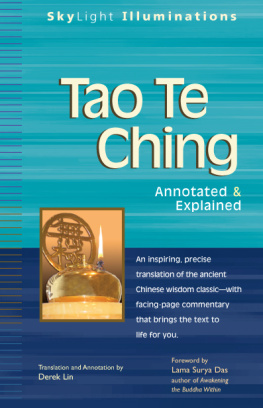
For my teacher, Hua-Ching Ni, who has guided my own journey toward Tao with humor, deep insight, and wisdom for more than two precious decades.
Contents
Foreword
I was born in China at the beginning of the Sino-Japanese war, moving constantly for eight years throughout China to hide from the Japanese invasion. In spite of this, I was fortunate to have received a proper classical education, to be groomed and cultivated as the scholar in our traditional Chinese household. I still have the distinct recollection of memorizing the verses of Tao Te Ching in the dim candle-lit air-raid shelters. The Chinese classics, including Lao Tzus teachings and The 300 Poems of Tang Dynasty, were my constant companions in my youth.
Although as a child I hardly understood the deeper meanings of those words, I simply loved the sound of them and enjoyed chanting those comforting mantras. Subconsciously, these seeds were planted in my brain and in my heart and soul, waiting to come into full bloom in my adult years.
I came to America in 1955 for my advanced education to become an architect, a dancer-choreographer, and a teacher in the arts. I was fortuitously recruited by mentor-friends Aldous Huxley, Alan Watts, and Joseph Campbell to be a teacher of Asian philosophy and Tai Ji as Living Tao at the newly established human-potential growth center, Esalen Institute, in Big Sur, California, in the mid-Sixties.
My life took a sudden shift from academia to experiential explorations into the East-West cultural-arts synthesis. I began digging deeper into the wellspring of my Chinese heritage and have continued to invest my learning and teaching in this lifelong endeavor of creative discovery all around the world.
In my first book, Embrace Tiger, Return to Mountain, a transcription of my verbatim teaching in the early years at Esalen Institute, a chapter was devoted to my attempt to translate the Tao Te Ching. Even then I fully realized how impossible the task would be. It had to be practiced, as a new and always renewed experience, to become a constant ritual for all devoted Tao students of life.
I have known Solala Towler as a friend and colleague for many years, and I respect and admire his sincere and solid stance as a lifelong student of Tao. I applaud him for acknowledging this lifelong study to be a practice, a daily ritual, the same way we practice Tai Ji and Qi Gong and how we observe and marvel at the always new, magical sunrises and sunsets in our creative lives.
To fully immerse oneself in this ancient language of Tao Te Ching, readers must realize that no translation can possibly do full justice to the metaphoric and poetic allusions of the succinctly selected symbols in these verses. They simply provide spaces and gaps for the reader to enter through their own experience and personal understanding at the time of reading and contemplating these words.
Solala understands this daunting task well, and he has valiantly plunged into this abyss to share with readers his personal practice in the learning of these eighty-one gems of Lao Tzus poetics.
Enjoy and treasure this exciting and rewarding journey into Tao with him.
Chungliang Al Huang
Founder and President, Living Tao
Foundation, livingtao.org
Lan Ting Institute, Wu Yi Mountain,
China and Gold Beach, Oregon
Introduction
The great tradition of Tao is not a lifeless, historical record. It is an accumulation of vital experience. I assure you that it is not finished, sealed, and closed, but remains ever flexible and open to new additions.
Hua-Ching Ni
M any people think of the Tao Te Ching as a book of ancient Chinese philosophy. Others see it as a guide to becoming a good ruler of a country. In modern China, it has been translated into the social dialectic language of the Communist Party. Yet, when read by a seeker on the path of wisdom, Lao Tzus text is a wonderful and precise guide to the process of becoming a sage or enlightened being, a zhenren. For spiritual aspirants, the Tao Te Ching is a manual on how to accomplish, within oneself, a high level of spiritual cultivation.
Each verse is a step along the journey toward wholeness and deep connection to Source or Tao. The word Tao means both a path and walking on that paththis path that is a pathless path. The first line of the Tao Te Chingtao ke tao fei chang taois literally translated as, Tao can be taod not eternal tao. It can also be translated as, The Way that can be followed is not the eternal or long-lasting Way. So how can we follow this way that cannot be followed, in the worldly sense? It is by studying the teachings and doing the practices that Lao Tzu offers us that we are able to make our own track, our own path, our own inner journey.
There are many practices within the Tao Te Ching, but they are usually obscuredeither translated incorrectly or simply not understood by the general reader. This version of Lao Tzus book is for the student of self-cultivation who wishes to use Lao Tzus ancient and revered teachings as a guide toward oneness with Tao. Notice I do not say the Tao. That is because Tao is not a thing; it is an ever-evolving and ongoing state of being.
In Lao Tzus time, around the sixth century BCE, there was nothing called Taoism. Originally, people who followed Lao Tzus teachings were just called the people of the secret formula. This was an era when mystics and philosophers lived alone in Chinas mountains or else in towns and applied his teachings and practices to their lives. Taoism as a religion came about six hundred years later, when Zhang Daoling was visited by Lao Tzu and guided to create a religious form of Taoism called Tian Shi, or Heavenly Masters.
Even so, in its essence, Tao is still beyond religion. For twenty-five hundred years, these teachings have been followed by the hermit, philosopher, and artist. Taoism is a way of deep reflection and learning from nature, which is considered the greatest teacher. Followers of the Way studied the stars in the Heavens and the energy that lies deep within the Earth. They meditated upon the energy flow within their own bodies and mapped out the roads and pathways it travels. This has led, over time, to the development of many practices that are used today, such as Chinese medicine, I Ching, meditation, feng shui, chi gong (qigong), tai chi (taiji), internal alchemy, sexual cultivation, and astrology.
Many of these practices grew out of the wisdom of the man we know as Lao Tzu, yet that was not his given namerather, it is an honorific title. Lao means old, and Tzu means master or sage. Interestingly, the written Chinese character for master, tzu, is the same as the one for child. So, while he is often called Old Master, we sometimes see his name translated as Old Boy or Old Child, which is appropriate given the perpetual innocence cultivated through the Way.
Legend has it that Lao Tzu wrote the Tao Te Ching in response to a request from one of his students. Lao Tzu was the head archivist at the royal library during Chinas Zhou dynasty. He was in charge of all the ancient scrolls of the kingdom and, by fulfilling his duties, reached a high level of wisdom. In this wisdom, he foresaw a time when society would crumble and the kingdom would be ravaged by war. Upon this realization, he hitched up a wagon to his favorite ox and set out for the farthest frontier.
As the sage journeyed west, a man named Yin Xi, who was in charge of the gate at the frontier post of Hangu, saw a purple cloud of light drifting toward him. Because of this, he knew that someone special was coming. Sure enough, several days later, Lao Tzu arrived. After eating a hearty meal together, Yin Xi begged Lao Tzu to leave behind his teachings to pass down to generations through the ages. Lao Tzu spent the night composing the eighty-one verses of the text we now know as the
Next page
